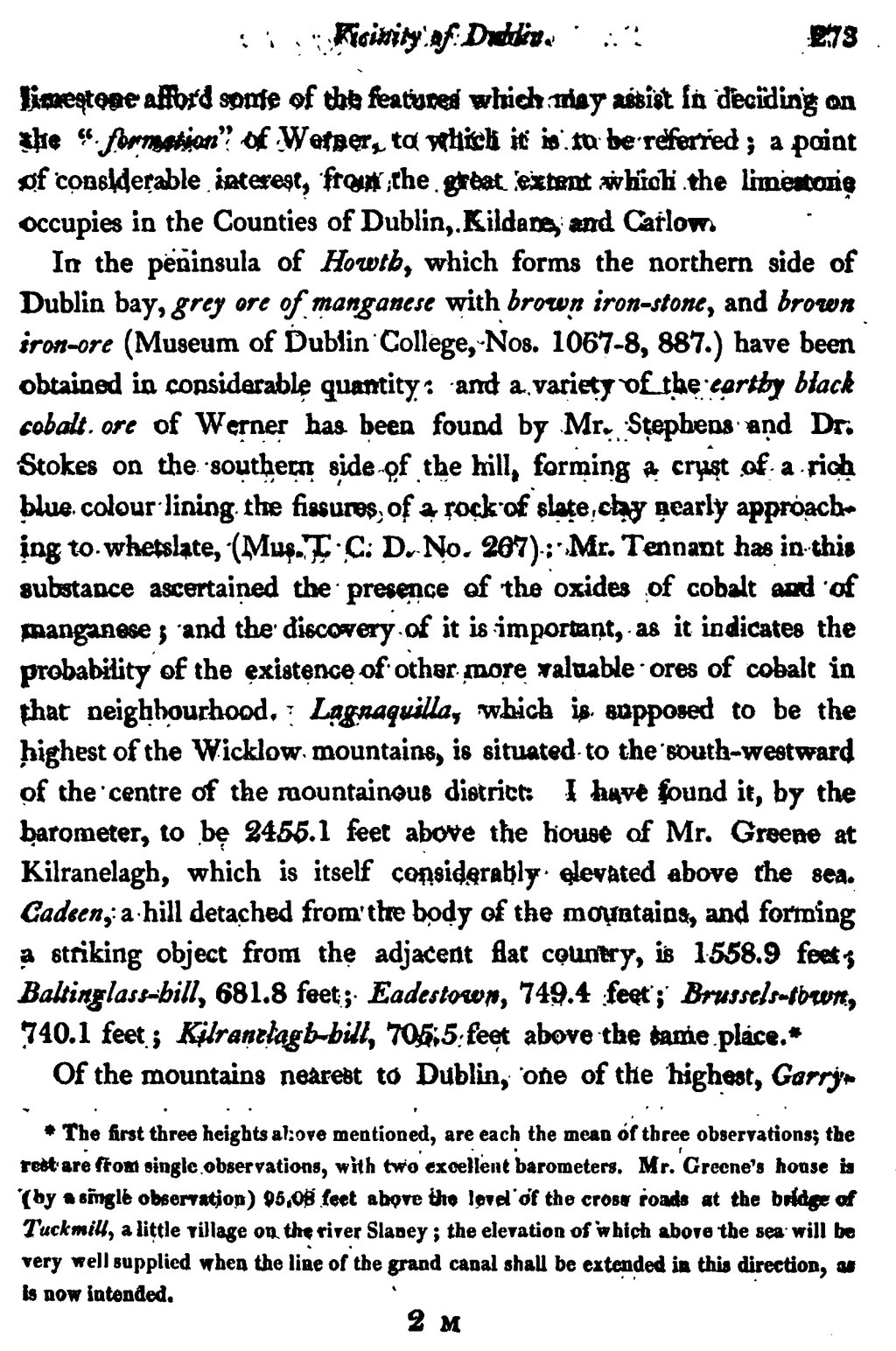limestone afford some of the features which may assist in deciding on the “ formation” of Werner, to which it is to be referred; a point of considerable interest, from the great extent which the limestone occupies in the Counties of Dublin, Kildare, and Carlow.
In the peninsula of Howth, which forms the northern side of Dublin bay, grey ore gf manganese with brown iron-stone, and brown iron-ore (Museum of Dublin College, Nos. 1067-8, 887.) have been obtained in considerable quantity: and a variety of the earthy black cobalt ore of Werner has been found by Mr. Stephens and Dr. Stokes on the southern side of the hill, forming a crust of a rich blue colour lining the fissures of a rock of slate clay nearly approaching to whet slate, (Mus. T. C. D. No. 267): Mr. Tennant has in this substance ascertained the presence of the oxides of cobalt and of manganese; and the discovery of it is important, as it indicates the probability of the existence of other more valuable ores of cobalt in that neighbourhood. Lagnaquilla, which is supposed to be the highest of the Wicklow mountains, is situated to the south-westward of the centre of the mountainous district. I have found it, by the barometer, to be 2455.1 feet above the house of Mr. Greene at Kilranelagh, which is itself considerably elevated above the sea. Cadeen, a hill detached from the body of the mountains, and forming a striking object from the adjacent flat country, is 1558.9 feet; Baltinglass-hill, 681.8 feet; Eadestown, 749.4 feet; Brussels-town, 740.1 feet ; Kilranclagh-hill, 705.5 feet above the same place.[1]
Of the mountains nearest to Dublin, one of the highest, Garry-castle,
- ↑ The first three heights above mentioned, are each the mean of three observations, the rest are from single observations, with two excellent barometers. Mr. Greene's house is (by a single observation) 95.08 feet above the level of the cross roads at the bridge of Tuckmill, a little village on the river Slaney ; the elevation of which above the see will be very well supplied when the line of the grand canal shall be extended in this direction, as is now intended.

